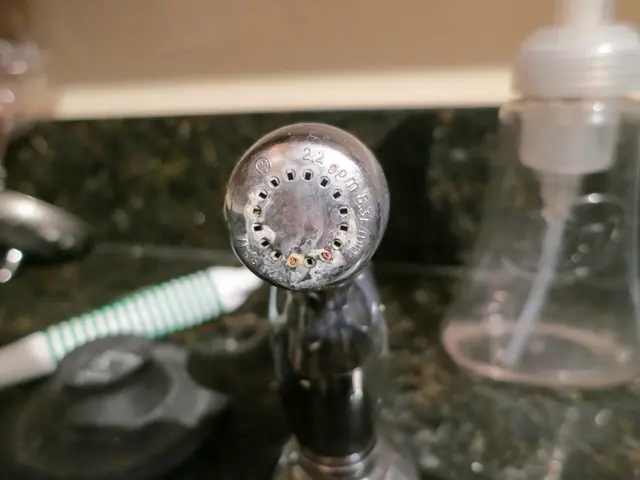"Managing Beard Psoriasis: A Guide for Those Seeking Relief"
Beard psoriasis, a variant of psoriasis that affects the skin in the beard area, can be a challenging condition to manage. Here are some tips to help you keep your beard healthy and psoriasis-free.
Firstly, exfoliating your beard area with a chemical exfoliant 1 to 2 times a week can help prevent ingrown hairs and keep your skin clear. If you have oily or acne-prone skin, look for a cleanser with salicylic or glycolic acids to help manage clogged pores and gently exfoliate psoriasis patches.
Ingredients particularly recommended for treating beard psoriasis include Hamamelis Virginiana (witch hazel) leaf extract, salicylic acid for gentle exfoliation, licorice root extract (Glycyrrhiza Glabra) for anti-inflammatory effects, and Pirocton-Olamin, which reduces dandruff and inflammation, supports hair growth, and helps remove dead skin cells. These components help reduce inflammation, remove excess skin, and combat bacteria.
However, shaving and beard products can further irritate skin psoriasis. To avoid this, use a gentle facial cleanser on your beard and face, as suggested by the American Academy of Dermatology Association. Avoid products with alcohol, as it can dry and irritate the skin in beard psoriasis. Fragrance in products can also dry out the skin and aggravate sensitive skin.
The National Psoriasis Foundation's Seal of Recognition indicates that an over-the-counter product is safe and effective for treating beard psoriasis. Jojoba oil, for instance, moisturizes skin and hair to soothe dryness in beard psoriasis. After washing your face, apply a moisturizer to clean, damp skin.
If you deal with acne, use a non-comedogenic beard conditioner to avoid more breakouts and irritation. Salicylic acid exfoliates scales and helps treat acne when used in moderation for beard psoriasis.
Shaving with care can help avoid further irritation. Use a clean razor blade after 5 to 7 shaves, shave after a shower or place a warm towel on your face for a few minutes to soften the hair, make sure your skin and beard are wet, apply shaving cream, oil or gel prior to shaving, shave in the direction your beard grows, not against the grain, after each pass of your razor, rinse it, and use a moisturizer, beard oil, or beard conditioner right after shaving.
Environmental triggers like physical trauma, drug use, infection, obesity, stress, smoking, and excess alcohol may also cause psoriasis flares. In the beard area specifically, shaving and beard products may cause further irritation that triggers a flare.
Stress can trigger psoriasis, and finding ways to relax or avoid things that stress you out may help manage beard psoriasis. If beard psoriasis symptoms include hair loss, bleeding or pus from the skin, noticeable pain, rashes spreading, or raised, red patches of skin, a medical dermatologist should be consulted for treatment options.
Prescription-strength treatments that a dermatologist may recommend for treating beard psoriasis include corticosteroids, vitamin D analogs, calcineurin inhibitors, retinoids, and biologics. Coal tar can also treat itching, redness, flaking, and swelling, and slow skin cell growth in beard psoriasis.
Remember, itchy skin and redness associated with beard psoriasis can be soothed with the anti-itch ingredients calamine, camphor, hydrocortisone, and menthol.
By changing up your facial hair products and sticking to a psoriasis-friendly skin care routine, you can effectively manage beard psoriasis.
Read also:
- Warning Issued by Dismissed CDC Chief Susan Monarez: RFK Jr. jeopardizes public health
- Movie Screening of The Chocolate War in Nordhorn
- European Commission Unveils Communication on Strategic Approach for Countering Online Disinformation and Hate Speech
- Experience widespread infertility issues in cattle herds? Farmers unveil effective strategies







